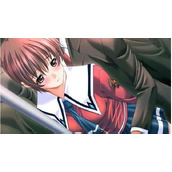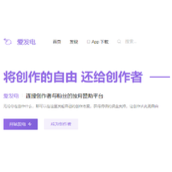EF中的ObjectContext或是NHibernate session
作者:袖梨
2022-06-25
在使用各个ORM框架的时候,我们不免都会碰到这样的一些问题
- 当我们希望使用延迟加载时ObjectContext已经被释放了
- Attach一个实体时被告知不能被多个IEntityChangeTracker引用
例如下面的情况
namespace Demo.Business
{
public class BPerson
{
public static void DoSomething(Person p)
{
p.Age++;//这里我们进行一些修改
var db = new Entities();
db.Person.Attach(p);
db.ObjectStateManager.ChangeObjectState(p, EntityState.Modified);
db.SaveChanges();
}
.......
//PeopleController.cs
[HttpPost]
public ActionResult Edit(Person person)
{
if (ModelState.IsValid)
{
Business.BPerson.DoSomething(person);
var db = new Entities();
db.Person.Attach(person);//这里会抛出异常
db.ObjectStateManager.ChangeObjectState(person, EntityState.Modified);
db.SaveChanges();
return RedirectToAction("Index");
}
return View(person);
}
显然解决的办法就是使用同一个ObjectContext的实例,但是还有需要注意的一点:我们什么时候实例化它,怎么样得到它的引用又什么时候释放它?
我想到了
HttpContext.Items
我们可以方便的在程序的各个位置获得它的引用,于是上面的代码稍加修改:
public static void DoSomething(Person p)
{
p.Age++;
var db = GetDB();
db.Person.Attach(p);
db.ObjectStateManager.ChangeObjectState(p, EntityState.Modified);
db.SaveChanges();
}
public static Entities GetDB()
{
var db = HttpContext.Current.Items["KEY_DB"] as Entities;
if (db == null)
{
db = new Entities();
HttpContext.Current.Items["KEY_DB"] = db;
}
return db;
}
[HttpPost]
public ActionResult Edit(Person person)
{
if (ModelState.IsValid)
{
Business.BPerson.DoSomething(person);
var db = Business.BPerson.GetDB();
db.Person.Attach(person);
db.ObjectStateManager.ChangeObjectState(person, EntityState.Modified);
db.SaveChanges();
return RedirectToAction("Index");
}
return View(person);
}
看起来不错。剩下释放的问题。
我们希望在整个http请求中使用同一个ObjectContext实例,所以就在请求结束的时候释放吧,像这样
public static Entities GetDB() { var db = HttpContext.Current.Items["KEY_DB"] as Entities; if (db == null) { db = new Entities(); HttpContext.Current.Items["KEY_DB"] = db; HttpContext.Current.ApplicationInstance.EndRequest += DisposeDB; } return db; } private static void DisposeDB(object sender,EventArgs e) { if (HttpContext.Current.Items.Contains("KEY_DB")) { var context = HttpContext.Current.Items["KEY_DB"] as Entities; if (context != null) context.Dispose(); } }
或者你可以将实例化和释放都放到Global.asax.cs中。
相关文章
精彩推荐
-
 下载
下载猪笼城寨手游
模拟经营 猪笼城寨手游猪笼城寨游戏是非常好玩的一款模拟经营类型的手游,在这里玩家们
-
 下载
下载商道高手vivo版本
模拟经营 商道高手vivo版本商道高手vivo版是一款商战题材的模拟经营手游,游戏画面精美
-
 下载
下载我在大清当皇帝手游
模拟经营 我在大清当皇帝手游我在大清当皇帝手游是一款以清代为历史的模拟类手游,相信玩家们
-
 下载
下载解忧小村落最新版2024
模拟经营 解忧小村落最新版2024解忧小村落游戏是非常好玩的一款休闲放置经营类型的手游,在这里
-
 下载
下载洋果子店rose2中文版
模拟经营 洋果子店rose2中文版洋果子店rose2中文版是一款非常好玩的模拟经营手游,精美的
















